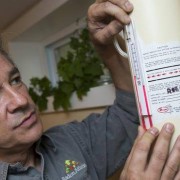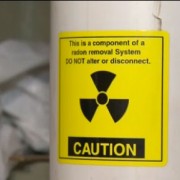How to Do Radon Testing in Nova Scotia at Home
Radon is a naturally occurring radioactive gas, and high levels of radon in your house can pose a significant health risk. In Nova Scotia, radon levels can vary significantly, more than any other region, thus it won’t be prudent for a homeowner not to conduct any tests for this invisible threat. The guide here will feed you with a complete means of radon testing, the reasons for it, and what to do if there are high levels of radon in your house.
What is Radon and Why is it a Concern?
Radon is an odorless, tasteless, colorless gas produced by the natural decay of uranium found in rocks, soil, and water. When released into the air, radon can become highly concentrated in poorly ventilated spaces, such as homes. It continues to be a distant but very consequential risk factor for lung cancer, the second in line only after smoking itself, if one has a prolonged exposure to the gas.
Nova Scotia has been identified as a high-risk area for radon because of the geological composition of the province which allows higher levels of radon gas to be present in homes. A radon testing nova scotia will tell if one is at any risk.
How Does Radon Enter Your Home?
Radon gas enters homes from the ground from several entry points, including:
- Foundation cracks
- Gaps around pipes and utility lines
- Floor drains and sump pits
- Construction joints
- Crawl spaces
The gas may accumulate once inside, especially at lower levels of your home where ventilation is inadequate. Radon testing in Nova Scotia is essential to determine the radon levels within your home.
When Should You Test for Radon?
Ideally, testing should take place after your home has been sealed for winter. During colder months, closed windows and doors help stabilize radon levels indoors. The testing done in winter ensures that there is an accurate assessment of the highest radon levels the home could experience.
Types of Radon Testing Methods
There are generally two types of radon tests: short-term tests and long-term tests. Your best choice will depend on how soon you need the results and how accurate you want them.
Short-Term Testing
Short-term radon tests are intended simply to provide insight into the levels of radon present in your home within a short period. These tests generally last between 2 and 7 days. These tests provide a useful initial reading, but long-term testing is more accurate, as radon levels can fluctuate over time.
Long-Term Testing
Long-term radon tests are, by the name itself, tests that last for a period longer than 90 days; that means they will provide the best accurate average of radon exposure over time. This type of testing takes into account seasonal variations, hence making it much likely the best way to ascertain whether radon mitigation steps are needed.
How to Perform a Radon Test in Your Home
The radon test is a simple, straightforward test that can be performed by most homeowners. Here is a procedure on how to conduct it.
- Purchase a Radon Test Kit – Either online, at your local health department, or at almost any hardware store, you can buy a radon test kit. In Nova Scotia, guidance on reliable radon test kits is given by organizations like Radon Atlantic and Health Canada.
- Choose the Right Location – The test kit should be placed in the lowest level of your home that is used frequently-for example, a basement or a main living area. Avoid placing the test in areas with high humidity, near vents, or windows.
- Follow the Instructions Carefully – Each radon test kit comes with specific instructions. You should try to stick to these specific instructions verbatim to get reliable results.
- Leave the Test Undisturbed – It’s best not to move the device while taking the measurement or interfere in any way with the overall environment where the kit is left.
- Send the Test for Laboratory Analysis – At the end of the test period, send the kit to the laboratory recommended in the kit. Most kits come along with prepaid envelopes for ease of mailing.
- Review the Results – When the radon test results come back, compare them to the safe limits recommended by Health Canada. If values exceed the acceptable limit of 200 becquerels per cubic meter (Bq/m³), you should take remedial measures.
What to Do If Your Radon Levels Are High
If the radon levels in your home are above 200 Bq/m³, It is crucial to take immediate action to reduce exposure.. Here are actions you can start considering:
Improve Ventilation
Better air circulation can lead to a decrease in radon levels indoors. You can do this by opening windows, using exhaust fans, and ensuring good ventilation is available in basements and crawl spaces.
Seal Cracks and Entry Points
Seal cracks in the foundation and slabs, walls, and flooring to reduce radon entry. Pay attention to gaps around pipes and drains.
Install a Radon Mitigation System
A professional will install a radon mitigation system in the foundation. Such a system will efficiently redirect radon gas from below the home. Radon Atlantic provides professional radon mitigation services to ensure your home remains safe.
Regular Monitoring
Even after mitigation is complete, radon levels must still be monitored inside your home. Periodical testing will guarantee that mitigation efforts remain effective, and your home is not dangerous. Regular radon testing in Nova Scotia is essential to maintain long-term safety.
Government Support and Resources in Nova Scotia
In Nova Scotia, various governmental and health organizations will provide information links, workshops, and resources in support of radon testing and mitigation. Homeowners can access resources from:
- Health Canada’s Radon Program
- Nova Scotia Lung Association
- The Canadian National Radon Proficiency Program (C-NRPP)
- RadonAtlantic offers professional radon testing and mitigation services.
These organizations provide information on testing, mitigation measures, and certified radon professionals for further assistance in remediation efforts.
Conclusion
Radon exposure is a serious health concern; testing in Nova Scotia is an easy and effective way to ensure your safety. You should opt for reliable radon testing kits as well as follow the testing procedure rightly in case of any confirmation for mitigation to cut the risk of health threats featuring radon.
If you haven’t tested your home yet, there is no better time than now. Get started today and keep your now-and-forever radon-free home healthy for you and your loved ones in Nova Scotia. Get professional help from Radon Atlantic for testing and mitigation to help keep your home safe.






